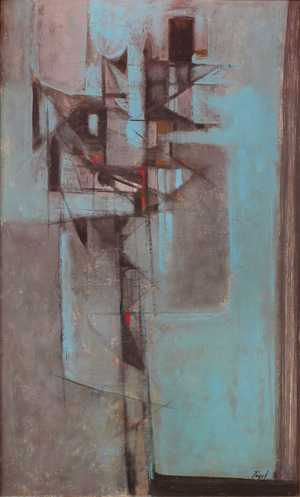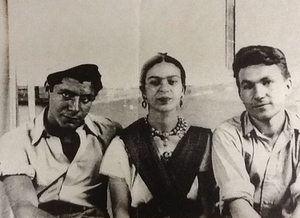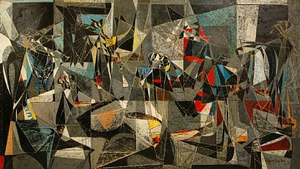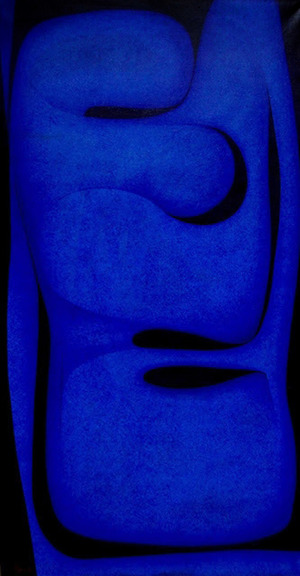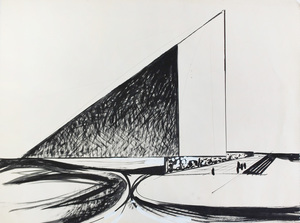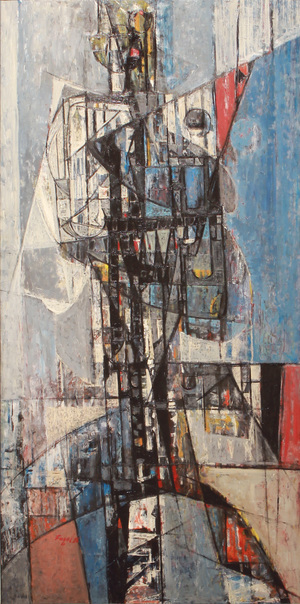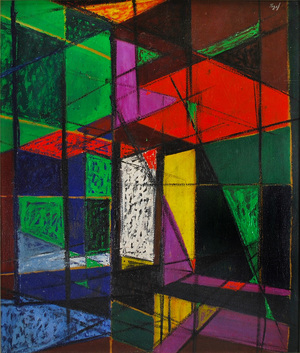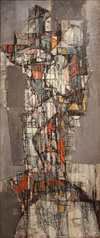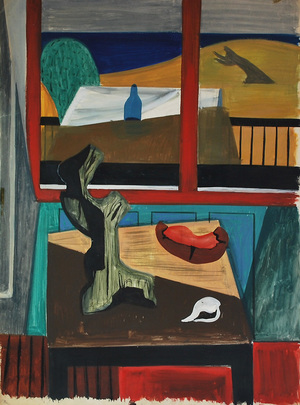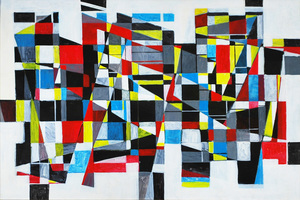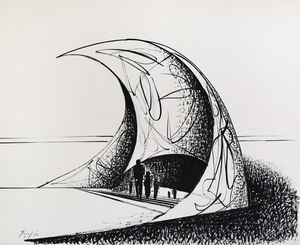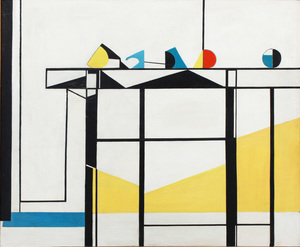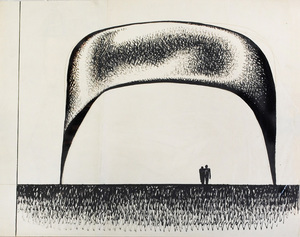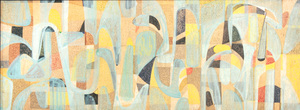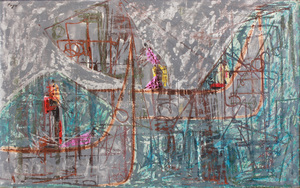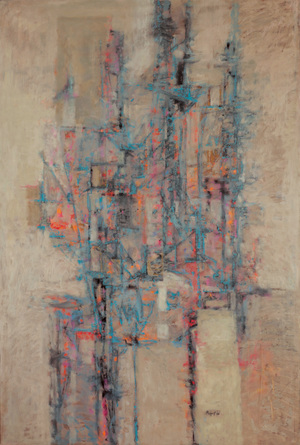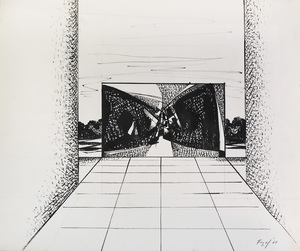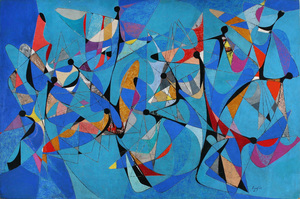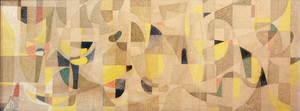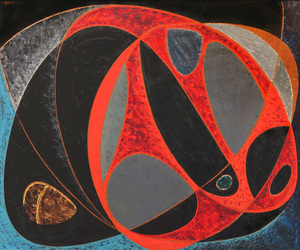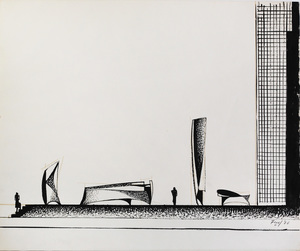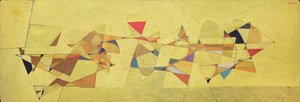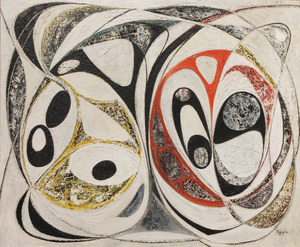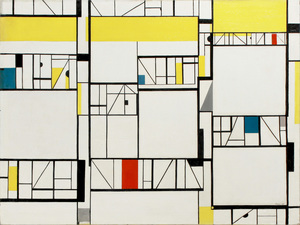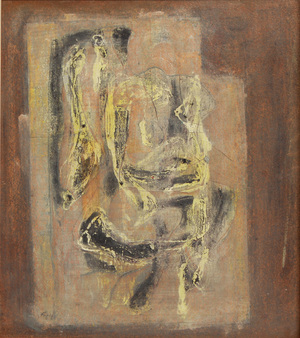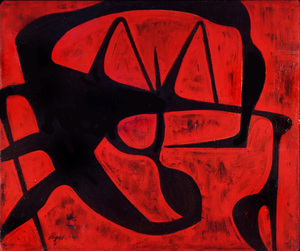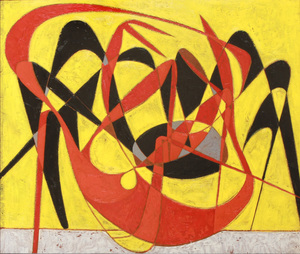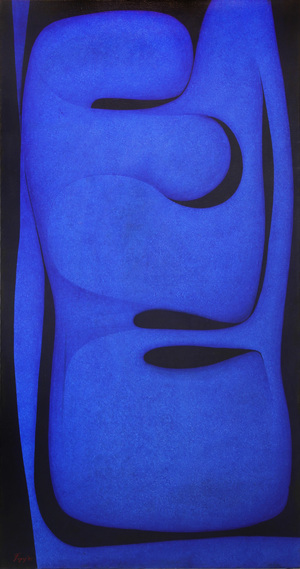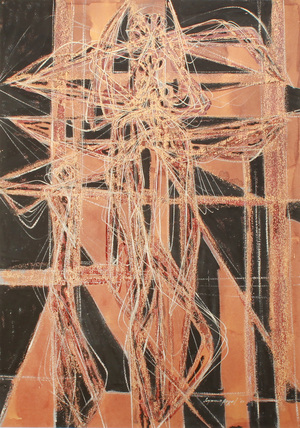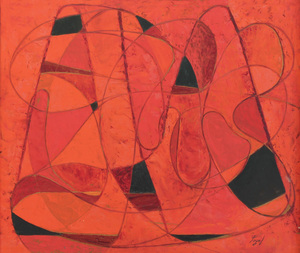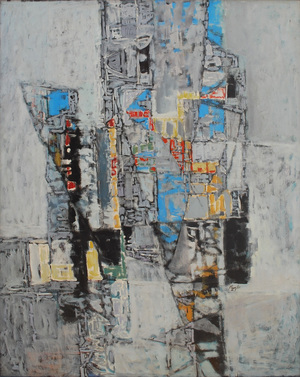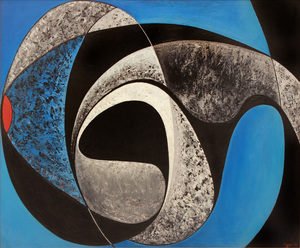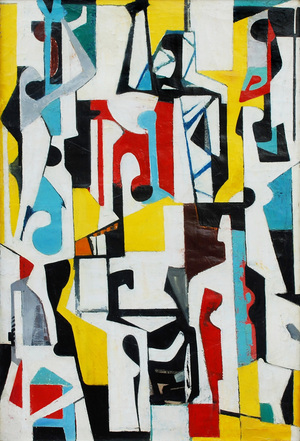Seymour Fogel: On the Wall and Beyond
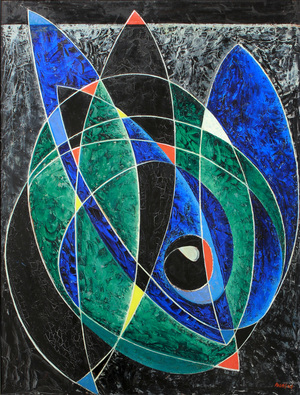
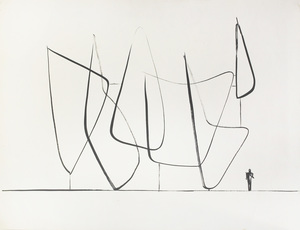
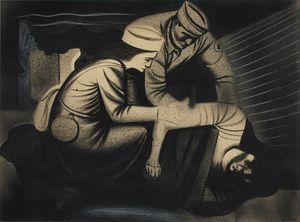
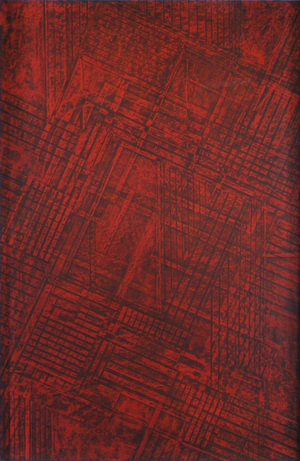
co-curated by Judy Tedford Deaton and Katie Robinson-Edwards
Seymour Fogel (1911-1983) was a founding father of Texas Modernism. This long overdue solo exhibition of Fogel’s paintings during the 14 years Fogel lived and worked in Texas between 1946 and 1960 is curated as a reintroduction to his distinctive stylistic experimentations and his mastery of color and complex architectonic compositions on the wall and in the studio.
Seymour Fogel was born in 1911 to immigrant artisans from Eastern Europe and grew up in the South Bronx. He graduated from high school in 1929, the year Wall Street crashed. A scholarship to the National Academy of Design allowed Fogel to attend evening class while he worked during the day doing odd jobs to help his family make ends meet. He attended classes at the Art Students League and in 1932 graduated from the National Academy of Design.
Eager for work, in 1933, Fogel worked as an assistant to Diego Rivera on his ill-fated Man at the Crossroads Looking with Hope and High Vision to the Choosing of a New and Better Future mural at Rockefeller Center. He joined the crew working with Ben Shahn and other aspiring young artists who were accepted into Rivera and Frida Kahlo’s circle of successful and upcoming artists. Fogel not only learned the art of mural painting and the labor-intensive technique of buon fresco from Rivera but also Rivera’s method of creating art accessible to the masses by infusing the decorative with the didactic.
Fogel was awarded important New Deal murals during The Depression working with Philip Guston, Bourgoyne Diller, Arshile Gorky, and many other artists who would become well-known modernists after WWII. All of Fogel’s New Deal murals were created in the socially conscious style of Rivera and American Depression-era abstracted realism. In 1936, Fogel was selected to exhibit in the exhibition, New Horizons in American Art at the Museum of Modern Art.
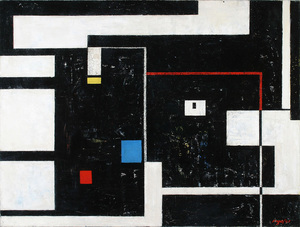
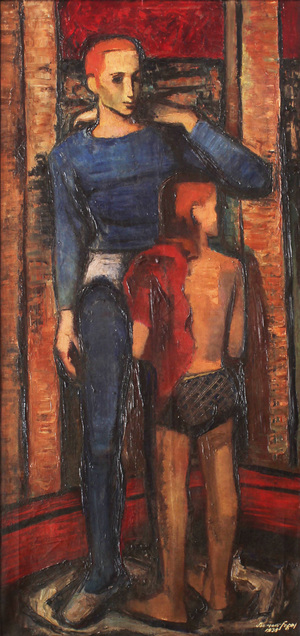
In 1946, Seymour Fogel left the new center of the international art world, his hometown of New York City, to join the newly established art department at the University of Texas in Austin. Armed with an art degree from the National Academy of Design, considerable New Deal mural experience and first-hand knowledge of European and American modernist abstraction, he became an early practitioner, teacher and advocate of nonobjective art in Texas.
The move to Austin marked a new era of exploration of modernist abstraction for Fogel. As he methodically worked through the formal challenges of abstraction, he created several series inspired by Picasso, Mondrian, and other modern masters. The inspiration for the “Limestone” series (1948-50) came from Austin’s limestone. Limestone No. 10, 1950, offsets the dominant ecru of natural limestone with black rhythmic circles accented with orange and yellow. The textured surface was created with a palette knife. Without the title, the painting would be interpreted as nonrepresentational gestural abstraction. Fogel’s titles typically reveal his source of inspiration.
Larger scale mural-size works such as Conclave (1950) is composed of a vast network of skeins, triangles, polygons and palette knife incisions. The aggressive technique of scraping surface layers reveals under painting and enriches the fully abstract surface. The composition is stabilized by a strong geometric composition of diagonals reminiscent of Rivera’s forceful, crowded, and densely packed mural compositions.
Fogel completed many mural commissions in Austin, Waco and Houston experimenting with ethyl silicate and dynamic geometric designs to compliment the modernist architecture of the day. A reproduction of Fogel’s newly restored 1951 American National Bank Mural (now the offices of McGarrah Jessee) is included in this exhibition. Fogel worked with architect Howard Barr (Kuehne, Brooks and Barr) and interior designer Florence Knoll to integrate his 10’ x 30’, colorful geometric design into, “a modern symphony of creative form.” The mural was featured in Fortune and Interiors magazines and in the Gold Medal Exhibition at the Architectural League of New York in 1950. In 1956 Art in America critic Dorothy Gees Seckler selected Fogel as a “New Talent” on the eve of his exhibition at the Duveen-Graham Modern Art Gallery in New York City and listed this as a parallel accomplishment with his easel paintings.
Important easel paintings from the 1950s included in the exhibition demonstrate Fogel’s continuing commitment to working in a variety of media. Totemic Form (1950), Totem (1955), Sanctuary (1956), Conflict (1955) and Minstrel (1955) have a strong vertical format. Each presents a unique towering presence embedded in a complex synthesis of color, line, surface and texture.
Success in New York brought Fogel back to the East Coast where he continued to experiment with radically different styles until his death in Connecticut in 1983. His contributions to and reactions to American modernism defy art historical or geographical boundaries. He was an artist of his time with a missionary zeal for the public role of art in society and for the personal quest for artistic inspiration through self-revelation.
– Judy Tedford Deaton
** Art © Estate of Seymour Fogel/Licensed by VAGA, New York, NY
